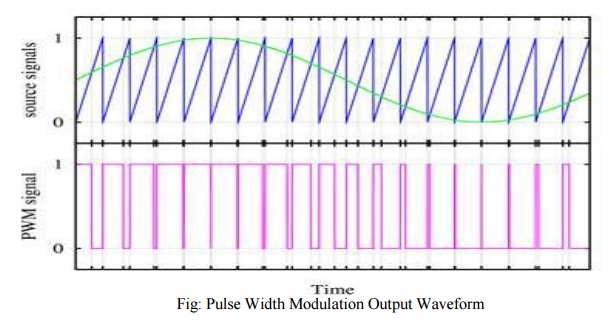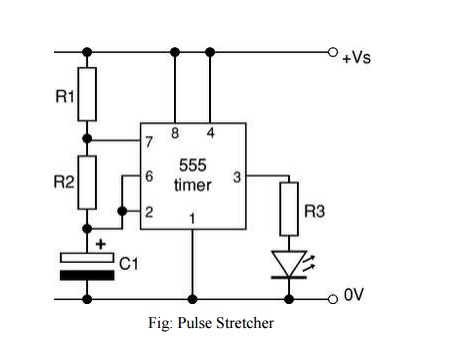(a) Frequency Divider:
The 555 timer as a monostable mode. It can be used as a frequency divider by adjusting the length of the timing cycle tp with respect to the time period T of the trigger input. To use the monostable multivibrator as a divide by 2 circuit, the timing interval tp must be a larger than the time period of the trigger input. [Divide by 2 tp> T of the trigger] By the same concept, to use the monostable multivibrator as a divide by 3 circuit, tp must be slightly larger than twice the period of the input trigger signal & so on, [ divide by 3 tp> 2T of trigger]
(b) Pulse width modulation:

Pulse width of a carrier wave changes in accordance with the value of a incoming (modulating signal) is known as PWM. It is basically monostable multivibrator. A modulating signal is fed in to the control voltage (pin 5). Internally, the control voltage is adjusted to 2/3 Vcc externally applied modulating signal changes the control voltage level of upper comparator. As a result, the required to change the capacitor up to threshold voltage level changes, giving PWM output.
(c) Pulse Stretcher:
This application makes use of the fact that the output pulse width (timing interval) of the monostable multivibrator is of longer duration than the negative pulse width of the input trigger. As such, the output pulse width of the monostable multivibrator can be viewed as a stretched version of the narrow input pulse, hence the name ― Pulse stretcher‖. Often, narrow –pulse width signals are not suitable for driving an LED display, mainly because of their very narrow pulse widths. In other words, the LED may be flashing but not be visible to the eye because its on time is infinitesimally small compared to its off time. The 55 pulse stretcher can be used to remedy this problem. The LED will be ON during the timing intervaltp = 1.1RAC which can be varied by changing the value of RA& C.


